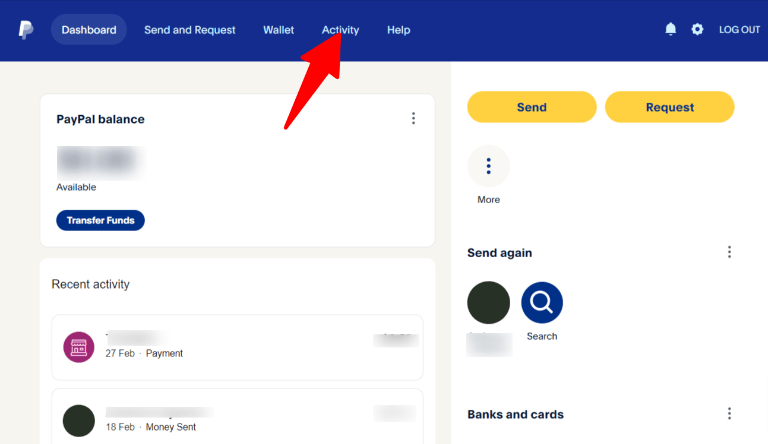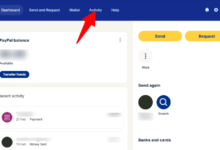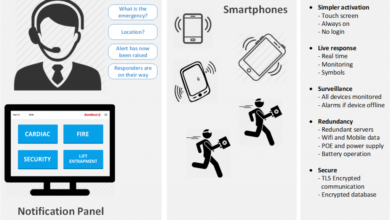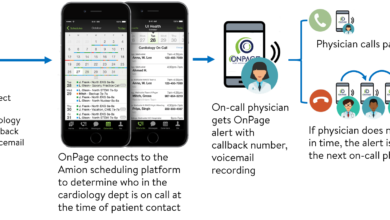Understanding PayPal Login Activity: A Guide to Security and Monitoring

In our digital world, online payments have become a huge part of everyday life. Paypal login activity, one of the most trusted online payment systems, makes it easy to send and receive money safely. But just like any other online account, PayPal users need to ensure their account security by regularly checking their login activity. “PayPal login activity” refers to the tracking of sign-ins on your PayPal account, giving you insights into when, where, and how your account was accessed. This feature can protect you from unauthorized access and keep your money safe.
In this guide, we’ll go over everything you need to know about PayPal login activity, including how to view it, why it’s important, and the best ways to secure your account. Let’s dive into the details to understand how to monitor and protect your PayPal account.
What is PayPal Login Activity?

PayPal login activity is a record of all recent sign-ins on your PayPal account. It shows you the time, date, and location of each login attempt, so you can see if there are any unusual or unauthorized accesses. This feature is essential for keeping an eye on your account’s security, allowing you to quickly spot any suspicious activity.
Whenever you sign in to your account, PayPal logs the details in your account’s login activity history. By regularly checking this log, you can make sure that you’re the only one accessing your account. If you notice a login from a device or location you don’t recognize, it could be a sign that someone else has gained access to your account.
Why is PayPal Login Activity Important?
The “PayPal login activity” feature is an important part of keeping your PayPal account secure. With millions of online transactions happening each day, it’s vital to stay aware of who’s accessing your financial accounts. By keeping track of your PayPal login activity, you can protect yourself from unauthorized access and potential fraud.
Here’s why monitoring your PayPal login activity matters:
- Identifies Unauthorized Access: You can catch any suspicious logins immediately.
- Prevents Fraud: If you spot a strange login, you can act fast to protect your account.
- Increases Peace of Mind: Knowing your account is secure can make you feel more confident using PayPal.
How to View PayPal Login Activity
PayPal makes it easy to view your login activity. Here’s how to access this feature:
- Log in to Your Account: Start by signing in to your PayPal account on a computer or mobile device.
- Go to Security Settings: On your account’s main page, find the “Security” section.
- Select Login Activity: In the security options, you’ll see a tab for “Login Activity.” Click on this to view the record of recent logins.
After opening this section, you’ll see a list of login times, dates, and locations. Each entry will show the device type (e.g., smartphone, desktop) and the IP address associated with that login.
Tip: If you notice any location or device that doesn’t look familiar, change your password immediately.
Recognizing Suspicious Login Activity
Sometimes, it’s easy to overlook small details, but when it comes to account security, staying alert is key. Recognizing suspicious PayPal login activity can save you from unwanted surprises. So, what should you look out for?
Signs of Suspicious Login Activity
- Logins from Unexpected Locations: If you see login attempts from countries or cities you haven’t visited, it’s a red flag.
- Multiple Login Attempts: Numerous failed logins in a short time could indicate someone is trying to guess your password.
- Unknown Devices: If a new device appears in your login history, make sure it’s yours. If not, take action quickly.
By recognizing these signs, you can identify and address potential security issues early, protecting your account from harm.
Securing Your PayPal Account
Monitoring your PayPal login activity is only one part of keeping your account safe. To add more layers of security, there are several important steps you can take. Below are some of the best practices for securing your PayPal account.
Enable Two-Factor Authentication (2FA)
Two-factor authentication (2FA) adds an extra layer of security to your PayPal account. With 2FA, you’ll need to enter a unique code sent to your phone in addition to your password. This means even if someone gets your password, they’ll still need the code to log in.
To enable 2FA on PayPal:
- Log in to your PayPal account.
- Go to “Settings” and select “Security.”
- Choose “Two-Factor Authentication” and follow the prompts to set it up.
Use a Strong and Unique Password
A strong password is one of the easiest ways to secure your account. Use a password that’s unique to PayPal and includes a mix of upper and lowercase letters, numbers, and special characters.
Password Tips:
- Avoid using easily guessed information (like your name or birthday).
- Don’t reuse passwords across different accounts.
- Consider using a password manager to generate and store complex passwords securely.
Keep Your Devices Secure
Securing the devices you use to log in to PayPal is just as important as securing the account itself. Ensure all your devices have up-to-date antivirus software, and avoid logging in on public Wi-Fi.
Device Security Checklist:
- Install antivirus software and run regular scans.
- Keep your device’s operating system up-to-date.
- Avoid logging in from shared or public computers.
Table: PayPal Account Security Checklist
Security MeasureDescription
Monitor Login Activity Regularly check login history for any suspicious activity.
Enable Two-Factor Authentication Adds an extra layer of security to your account.
Use a Strong Password Create a unique, complex password.
Keep Devices Secure Update antivirus software and avoid public Wi-Fi.
Be Wary of Phishing Emails Avoid clicking on links in suspicious emails.
What to Do if You Notice Unusual Login Activity
If you come across any suspicious activity in your PayPal login activity, it’s important to act quickly. PayPal offers various tools to help you resolve security issues and regain control over your account.
Steps to Take for Unusual Login Activity
- Change Your Password Immediately: The first step is to reset your password. Choose a new, strong password.
- Enable Two-Factor Authentication: If 2FA isn’t already enabled, now is the time to activate it for extra security.
- Report to PayPal: Contact PayPal’s customer service and report the unusual activity. They can investigate and provide further guidance.
- Check Your Linked Bank Accounts: Review your bank and credit card statements for any unauthorized transactions.
By taking these steps, you can secure your account and minimize potential risks.
Staying Safe with PayPal: Tips for Secure Usage
Beyond monitoring login activity, here are some additional tips to help you use PayPal securely:
- Avoid Phishing Scams: Be careful with emails that claim to be from PayPal. These might be phishing attempts, aiming to steal your login information. PayPal will never ask for your password or other personal details via email.
- Update Your Contact Information: Keep your phone number and email address up-to-date. This ensures PayPal can reach you if they detect any unusual activity.
- Log Out After Use: Especially on shared devices, always log out of your PayPal account when you’re finished.
Common Questions about PayPal Login Activity
Here are answers to some frequently asked questions regarding PayPal login activity:
Can I Check My PayPal Login Activity on Mobile?
Yes, you can view your PayPal login activity on mobile. Open the PayPal app, go to “Settings,” and select “Security.” From there, you can view recent login attempts and details.
What Should I Do If I Forget My Password?
If you forget your password, PayPal has a “Forgot Password” option on the login page. Follow the steps to reset your password securely.
Will PayPal Notify Me of Unusual Activity?
Yes, PayPal will send alerts if they detect unusual activity on your account. This might include logins from new devices or locations.
Final Thoughts on Monitoring Your PayPal Login Activity
PayPal login activity is a key feature for ensuring the security of your online transactions. By regularly checking your account’s login activity, enabling two-factor authentication, and following basic security practices, you can keep your account safe from unauthorized access.
Remember, protecting your account is an ongoing process. PayPal offers the tools and resources you need, but staying vigilant and monitoring your PayPal login activity remains essential. With these strategies, you can enjoy the convenience of online payments with confidence and peace of mind.





